
My Forex trading strategy was built on reversal trading. It has now expanded beyond just reversals, but reversal trading is where it all started. Over the years, I have refined reversal trade entries into a simple step-by-step process.
Entering trades does not need to be difficult; remember, my goal is to keep everything simple.
In the previous chapter I explained that a reversal comes in three parts.
You need to enter the reversal trade after part two (indecision) closes but before part three (the reversal trend) completely takes off. Obviously, if you enter after the reversal trend takes off, it is too late.
You also need to make sure you do not enter too early, as you could be entering a false setup.
In the image below, you see a preceding trend heading into support, indecision, and a failed reversal trend. If you entered too early, you would have failed this trade.
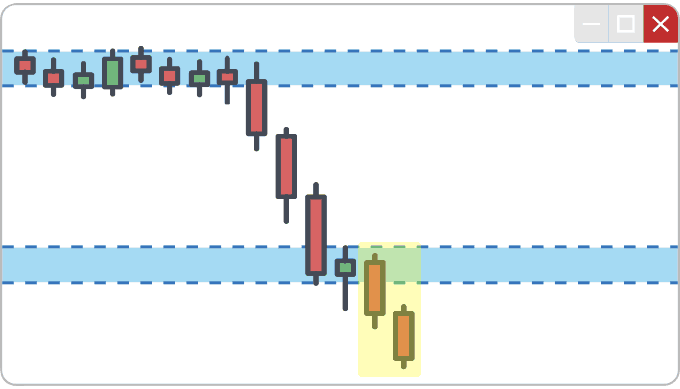
Failed trades happen; there is nothing you can do about them.
But getting in at the right time lowers your percentage of failed trades.
Many people wait for a candle to close to get in, but I have tested this thoroughly, and waiting for it to close gets you in too late. In the image below, you can see the first candle in the reversal trend closing far from support.
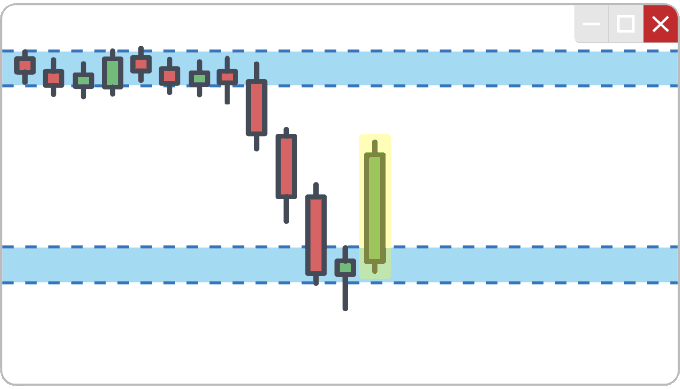
This means you miss out on a lot of potential profit, which is obviously not good.
The key to reversal trading, or any trading for that matter, is getting in at the right time.
So, how do you do that?
I have tested countless entry methods in the last 15 years. In that time, I have found three awesome entry strategies: entering on a new high or low, retrace entries, and distance entries.
In my free strategy, I will teach you the easiest: entering on new highs or lows.
When indecision forms on an area of support or resistance, you can use the high or low of the indecision candle as an entry trigger and as a stop loss.
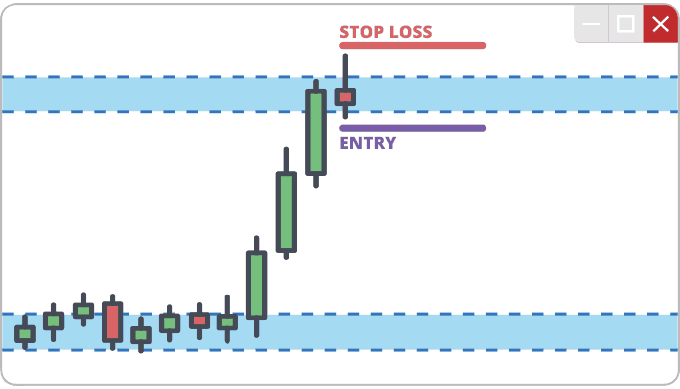
In the image above, indecision has formed on resistance after a bullish preceding trend, so we want to enter a short reversal trade.
We set our entry a few pips below the low of the indecision candle and our stop loss a few pips above the highest point of the candle.
In trading, highs and lows are very important. If a new low is created from resistance, it indicates sellers have taken control of price, which means we want to be short.
Our stop loss sits above the high, as a break of that high would indicate buyers have regained control of price.
For long trades, you set your entry a few pips above the high of indecision and a few pips below the low.
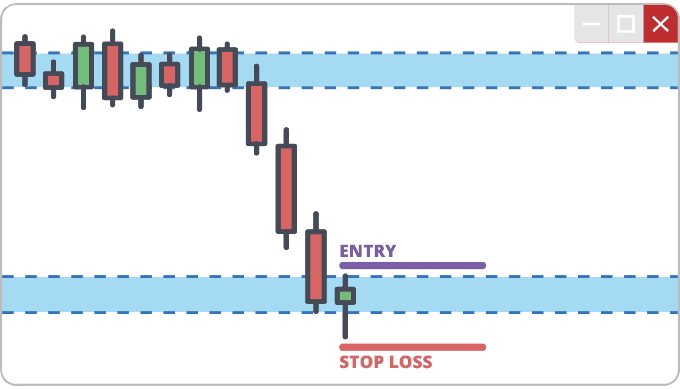
This is the most simple form of trade entry, but also one of the most effective.
Now that you know how to enter, you need to know where to set your target.
Targets are also very easy, you need to make sure your target comes before major barriers like the next area of support or resistance.
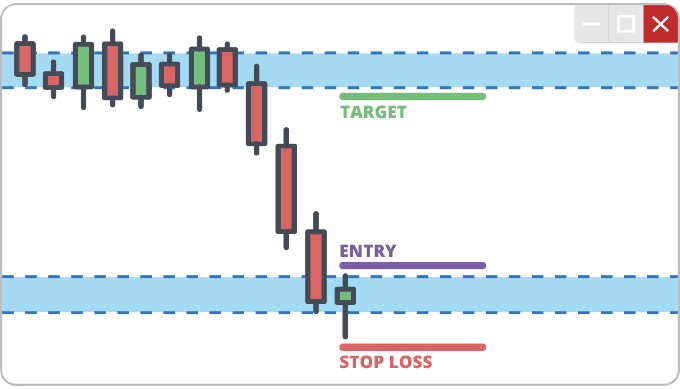
So, if you enter a long reversal from support, make sure that your target is before the next resistance area.
The minimum risk to reward ratio I use is 1:1.5 R. This means that my target has to be a minimum of 1.5 times the size of my stop.
If my stop is 100 pips, the minimum size of my target is 150 pips (1.5 x 100).
If my stop is 75 pips, the minimum size of my target is 112.5 pips (1.5 x 75).
If there is a major barrier, like the next support and resistance area, in the way of my minimum target, I skip the trade.
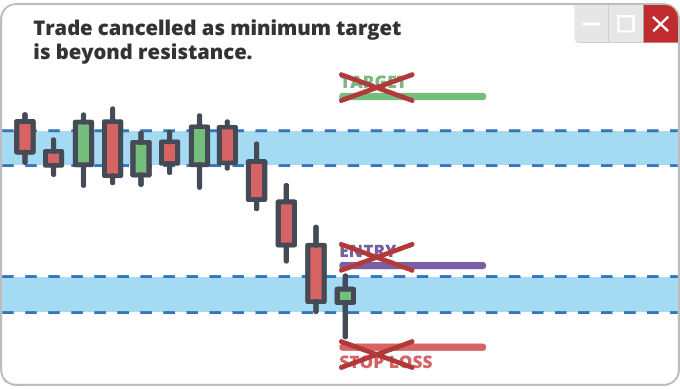
In the image above the support area is before my minimum target of 1.5 R is met so I skip the trade.
The last thing you need to know is the pairs and timeframes.
This strategy works on every single Forex pair, and it also works in other markets like cryptocurrencies, options, futures, stocks, and everything else.
I trade around 10 pairs regularly.
However, I often have extra pairs on my list that I monitor.
As for time frames, I currently trade around these.
Many people do not have access to the 6, 8, and 12-hour time frames because their broker doesn’t support them.
The general rule in trading is that the more time frames you trade, the more trades you find.
If your broker does not support 6, 8, and 12-hour time frames you need to find a broker who does or simply use a charting platform separate from your broker.
While this strategy can be traded with just the 4-hour and daily time frames, there is no sense in sacrificing potential trades because your broker is too outdated to provide new time frames.

Subscribe to our daily newsletter and get the best forex trading information and markets status updates
Trade within minutes!
Comment (0)